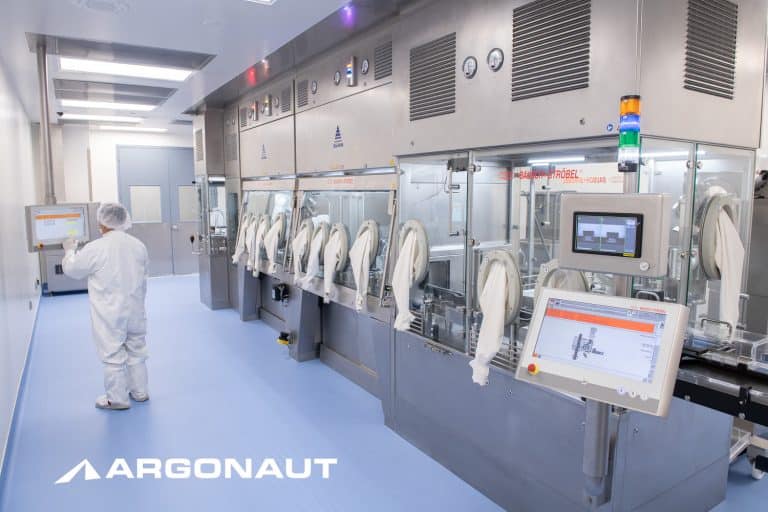Changing fill/finish CDMO
With the costs to produce and package a drug climbing, companies are justifiably risk averse when it comes to changing fill/finish CDMOs. Why would you try a new partner company when you have had positive past experiences with another? The unpleasant truth is that fill/finish providers can fall behind over time as new competitors and technologies emerge. Regulatory requirements are constantly evolving, and the costs to upgrade older facilities are high. Before defaulting to your current fill/finish CDMO, you need to investigate if their operation is still the best option for your project.
Fill/finish CDMOs can fall behind over time as new competitors and technologies emerge.
Staying Current is Not Guaranteed
Drug manufacturing has traditionally been outsourced to fill/finish CDMOs driven by the need for advanced equipment rather than a lack of in-house capacity, making technology a key differentiator. Drug substance ready for filling has already undergone expensive upstream production and purification, making any mistakes at this step costly. The fill/finish industry has been understandably slow to embrace innovations for this reason. However, recently there has been significant support for the adoption of new fill/finish technologies, largely driven by an industry-wide shift to produce smaller batches. The recent Annex 1 revision draft has also spurred a demand for risk-reducing technologies and automation in order to remain EU-compliant. Retrofits or new equipment can have price tags in the millions of dollars to implement.
With the high costs and long lead times required to upgrade a fill/finish CDMO’s capabilities, not all organizations have kept up.
With the high costs and long lead times required to upgrade a fill/finish CDMO’s capabilities, not all organizations have kept up. Your established go-to CDMO may not meet your current requirements or be the best option for new projects. Especially when high-value drug substances like biologics are involved, it is critical to evaluate your old supplier with fresh eyes. Switching to a more technologically advanced CDMO could make the difference for your clinical trial. There are several key risk-reducing technologies you should base your evaluation on, including single-use, barrier isolation type, and automation.
Single-Use Technology
Single-use technology is currently considered the most important advance in fill/finish technology, and demand is high for equipment that utilizes it. CDMOs and other multi-product facilities were among the first to adopt single-use, as it reduces cross-contamination risk and changeover times between projects. The direct advantage to your fill/finish project is a decreased risk of contamination.
RABS vs Isolators
Both restricted access barrier systems (RABS) and isolators perform a similar function during fill/finish; protecting the drug from operators and vice versa. In most filling operations the human operator is the greatest source of contamination risk, so newer equipment separates operators from the drug with RABS or isolators. Isolators fully seal off the core sterile filling operation from the surrounding environment. To compete, some manufacturers equipped with RABS technology have begun operating their equipment like isolators. They achieve this by locking the doors during production, using airlocks, and also adding robotics. However, while both technologies are similar with the doors locked, isolators have a decontamination cycle that RABS do not have, increasing the sterility assurance they can provide.
Robotics & Automation
The FDA has identified automation as critical to reduce errors, protect operators, and increase overall drug quality. With the recent Annex 1 changes, using anything but automation for fill/finish is essentially barred. Automated equipment can be fully housed within isolators, conferring those advantages to your project, as well. Some advanced lines also include robotics to perform more complex tasks, like de-nesting ready-to-use vials within the isolator. Single-use, isolators, and automation all synergize for peak risk mitigation.
The FDA has identified automation as critical to reduce errors, protect operators, and increase overall drug quality.
Yield-Maximizing Technology
In addition to the risk-minimization described above, you should also consider the filling yield of your current fill/finish CDMO. Smart equipment design and recent technological advances have combined to produce modern filling lines with only milliliters of residual drug substance loss. Look for equipment with a minimal fluid path and filling “start-up mode” like Bausch + Ströbel’s ADVANCEDFill technology. If your drug substance is of high value, working with a standard-yield CDMO could lead to costly losses.
Smart equipment design and recent technological advances have combined to produce modern filling lines with only milliliters of residual drug substance loss.
As fill/finish CDMOs continue to innovate for better, safer processes, it is critical that you select a partner that has modernized. Positive experiences in the past are not a replacement for new technology. Be sure to reevaluate your past CDMO anew, looking for key features like risk reduction and improved yield. Instead of defaulting to a past supplier, give your project the best chance of success.
Ready to explore new fill/finish options? Contact Argonaut to learn about how our state-of-the-art yield-maximizing technology can support your project.


